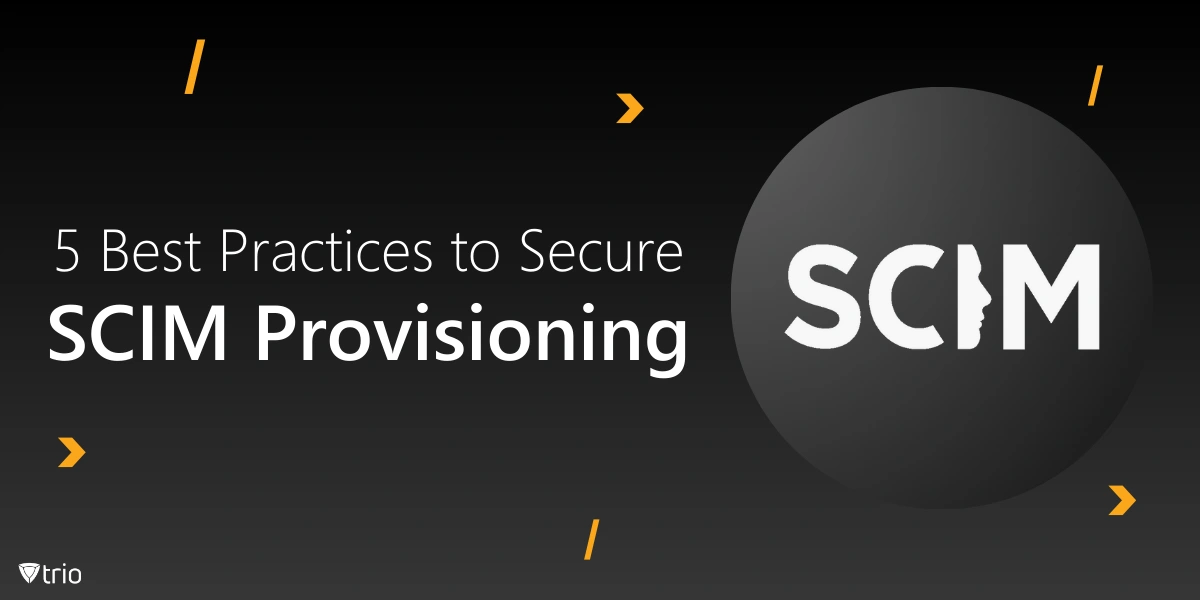User management within an organization, be it a large enterprise or a growing SME, can be a complex exercise, especially when employees perform multiple overlapping tasks. The complexity increases when the organization has to regulate access provisioning to multiple systems, external domains, and various SaaS and other applications.
Giving the right access to the right resource and taking away the same as and when required, especially when done manually, can be as cumbersome as entering separate usernames and passwords multiple times across multiple domains several times a day. What’s worse is operating in an unsecured environment.
That’s where the System for Cross-domain Identity Management (SCIM) comes in. True to its name, it has set a standard protocol to automatically manage the identity of a user or a group across multiple domains, doing so in a secure and seamless way.
5 Critical Best Practices for IT Admins
SCIM user provisioning is not just about the seamless process of transferring user identity data but also about identification and authentication, new user provisioning, synchronizing the data, and finally de-provisioning as and when required.
Apart from automated user provisioning, wherein the onboarding and de-boarding process is simplified, it also enables a higher level of security where it prevents unauthorized access and data breach, a standardized API for identity management, a much greater user experience - thanks to its seamless nature and scalability - meaning its suitable for both small organizations as well as large corporates with hundreds or thousands of employees.
Most importantly, SCIM supports interoperability between different identity providers and service providers, facilitating easier integration and collaboration across platforms.
That said, it is important to understand the SCIM protocol and data models to ensure proper implementation and integration with existing systems, as well as to choose the right SCIM provider. Okta, for example, offers robust SCIM provisioning solutions with pre-built integrations and can seamlessly integrate with various applications.
However, implementation is not just an out-of-the-box solution and requires SCIM-compliant solutions, an organization-wide integration – with the existing user directory be it Microsoft or Azure Active Directory or LDAP – and configuration of necessary connectors to ensure seamless synchronization and a thorough testing and continuous monitoring.
Here are some of the best practices that IT admins should consider when implementing SCIM.
1. Configuration is the Key
There are multiple aspects to be taken care of while setting up SCIM provisioning be it configuring endpoints of service providers for user and group management, authentication methods such as Oauth or other basic methods to protect sensitive data during provisioning, or setting ap a well-defined schema, including both standard and organization-specific custom attributes. Proper configuration ensures effective identity management and synchronization across different systems.
2. Well-defined Active Directory
Though enhancing user management capabilities is the basic requirement, automating and simplifying the process is equally important. For maintaining consistency across platforms, it is important to have a clear and well-defined Active Directory SCIM provisioning, which means it is important to ensure that user attributes in AD are synchronized with SCIM. Also, a clearly defined user or user group roles based on their roles and privileges is important to manage user permissions effectively.
3. Establish Clear Governance
Compliance and governance are crucial to ensure that all security concerns are addressed. To start with, organizations should establish clear guidelines about the use of SCIM, especially conditions under which a user will be denied access, users or groups will be de-provisioned, which users or teams get provisioned, and under what circumstances. Also, it is important to follow best practices of API token security such as rotating and expiring tokens using HTTPS for SCIM API.

4. Conduct Regular Audits
Every aspect of SCIM provisioning, especially the provisioning flow, needs to be regularly tested. Regular audits of user data and its compliance with SCIM standards will ensure that any possible discrepancies or errors can be rectified on time.
5. Train IT Resources
Make sure the IT team is adequately trained on SCIM implementation and management, especially when it comes to standardization in managing user identities across different domains, implementing secure identity management practices, knowledge on integration between various identity providers, and preparing them for the scalability of identity management processes. It is also important for IT staff to be trained in troubleshooting errors.
To ensure secure SCIM provisioning, IT admins must focus on proper configuration, maintain a clear and well-structured Active Directory, and establish clear guidelines for user and access management. Regular testing of the provisioning process is crucial to identify vulnerabilities, while an adequately trained IT team ensures that best practices are consistently followed. By implementing these measures, IT admins can enhance the security of their SCIM provisioning system.
How Trio Simplifies SCIM Provisioning
Trio’s simplified SCIM auto-provisioning and de-provisioning of users across multiple systems and services helps you save valuable time and reduce the risk of errors. It reduces the time needed to grant access requests and eliminates expensive manual administration. You can boost your efficiency and security with Trio’s intricate directory management integration for streamlined user provisioning, access control, and authentication processes across popular directory services.
Trio integrates seamlessly with all SCIM-based directory services such as Okta, Microsoft Azure AD, Google, PingOne, or OneLogin.
IT admins. want to simplify identity management for your organization? Schedule a free demo today to find out how Trio can streamline SCIM provisioning while enhancing security.
Trio Business offers a comprehensive MDM solution for SMBs, simplifying device deployment, security, and monitoring. With features such as remote device lock and automated patch management, it focuses on enhancing productivity while ensuring security compliance.
Get Ahead of the Curve
Every organization today needs a solution to automate time-consuming tasks and strengthen security.
Without the right tools, manual processes drain resources and leave gaps in protection. Trio MDM is designed to solve this problem, automating key tasks, boosting security, and ensuring compliance with ease.
Don't let inefficiencies hold you back. Learn how Trio MDM can revolutionize your IT operations or request a free trial today!





